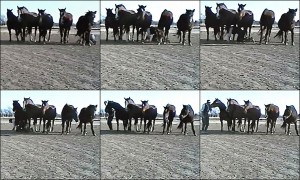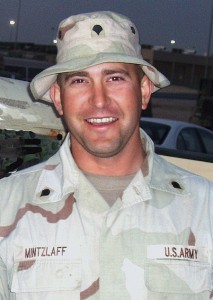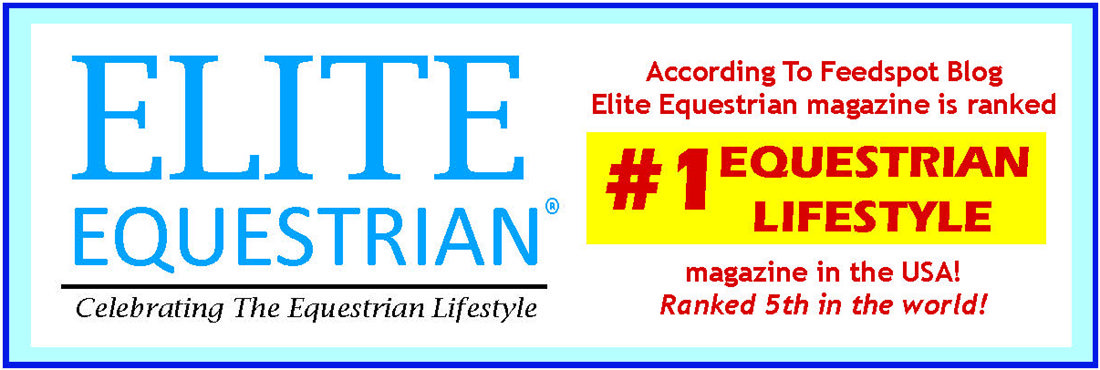
Friendship Training: What Other Relationship?
We all know of the various natural relationships that horses share: mare/stallion, mare/foal, bachelor herd and harem family band. Each holds varying degrees of hierarchal needs that fulfill equine culture. But when two horses bond, the need for herd rank is nonexistent. They share food and restive behavior, often play together and exhibit extreme separation anxiety when separated. Unlike the adversarial confrontations of protecting resources or space, it is a very intimate relationship they do not share with other horses in the herd. We call them horse pals or horse buddies. Equine ethologists and research scientists refer to them as affiliated pairing, nonsexual bonding, peer attachment, mutually beneficial coalitions and preferred associates.

About thirty years ago, John Young’s parting advice to the next generation of equestrians in his book, Schooling for Young Riders, was to always question the status quo by asking ‘why and why not’ which had been rumbling in the back of my mind. Horses have always seemed like very logical, caring creatures to me. Yet many horse owners seemed to be having a lot of problems with their horses. And as the internet blossomed, those behavioral problems seemed to fill every horse list and forum daily.
Something didn’t make sense. One would think that after working with the same animal for 6,000 years we’d have our training procedures ‘down pat.’ So I started asking ‘why.’ Twenty years later and as many thousand hours of critical analysis and study, I found a few answers.
One was that training was based on the hierarchical herd relationship while entrapping the horse and using varying degrees of intimidation, Negative Reinforcement and Punishment. This causes stress hormones to inhibit learning/cognition and creates a very confrontational, adversarial relationship, (the opposite of the harmonious Pair Bond/Peer Attachment relationship).
Another was the lack of easily accessible sound ethological/scientific equine-related knowledge and Learning Theory.
With the help of my son Brian, a Distance Learning Course evolved with the sole intent to give horse owners a greater understanding of equine culture and social/mental/emotional/physical needs as well as learning,

physiology, hoof care and nutrition. This includes but is not limited to: The Cloud series documentaries by Ginger Kathrens, Dr. Francis Burton’s Chapter Seven, The Natural Horse and Unnatural Behavior/Equine Veterinary Journal, Dr. Sue McDonnell and Daniel Mills’ The Domestic Horse: The Origins, Development and Management of Its Behaviour, Andy Beck’s Horse Behavior and Psychology, Dental/TMJ by Spencer LaFlure, The Impact of Nutrition and Feeding Practices on Equine Behaviour and Welfare by the Haveneyer Foundation, Palovian Conditioning by Dr.Robert A. Rescorla, Katy Wells safergrass.org and others. (Grass/hay/soil analysis is also recommended to pinpoint nutritional needs and prevent functional malnutrition.)
“First do no harm” cannot be fully implemented until traditional anecdotes and ‘pseudo-science’ have been replaced with sound empirical knowledge.
The course also includes step by step instructions, interactive exercises and daily email/Skype support for the sole purpose of nullifying previous trauma/negative experiences, and establishing the deepest levels of interspecies intimacy a horse and a human can possibly share together.
As the majority of equine communication is body language, specific combined hand/voice/body/facial expressions are used to establish a simple, easily understandable bridge language and encourage reciprocal communication.
For the first month, the caretaker simply ‘shares time’ with the horse while they consume their supplemental feed in a completely freedom-based environment. The step by step set of interactives are implemented at that time as there is a deeper incentive/motivation than singularly using treats. It also simulates the ‘sharing food’ behavior of the Pair Bond relationship. It is said that it takes about a month to ‘break a habit.’ While those who choose to deepen their relationship with their horse have already made the commitment to prioritize their horse’s mental, emotional and physical well-being above all else, this period of ‘sharing time/doing nothing’ aids in personal appreciation of their horse as an individual sentient being unlike any other horse in the world.

The initial interactives only require a few seconds that, through chaining, evolve into more complex requests of less than a minute. One of the first is inviting the horse to enter the owner’s most intimate proxemic zone, (momentarily touching their nose gently to their human’s cheek). The result is twofold. As the relationship evolves, (reciprocal communications is always encouraged) the horse will voluntarily use the ‘kiss’ as a means of communication to display affection and request to do (or not do) something. The positive pheromones received are an additional confirmation of the human’s intent and appreciation. Using varying levels of ‘no’ allows the relationship to be shaped with boundaries that prevent physical harm to the horse owner while maintaining maximum intimacy.
Whips, sticks and gadgets are neither needed nor allowed.
The Laws of Intention, Attraction and Appreciation directly apply throughout.
Our program has been extremely successful in over a dozen countries with horses of various breeds, genders, ages and varying degrees of PTSD, (many were regarded as ‘untrainable’ by any other known training format).
We all run into ‘financial tight spots’ in our lives. Two incidents brought me to where I am in life now. One was developing an Immediate Intervention Equi-therapy program designed to help severely abused children regain a foothold on life. The program was based on ‘prevention rather than cure’ Seeing the remarkable awareness and self-esteem it gave these children, I lost ‘professional detachment’ and in so doing, lost everything trying to manifest a social change on my own. It was my fault completely. More information and a few of the many letters of commendation the program received can be found at:

http://groups.yahoo.com/group/My_Life_and_Times/
The second was my son Brian enlisting in the United States Army right after the 911 terrorist attacks on the World Trade Centers in what some might call ‘righteous indignation.’ Before he left, he entrusted his childhood horse Rebel and her family with me until he returned with the understanding they must never fall into the hands of others. On his third tour of duty, S/Sgt. Brian L. Mintzlaff was killed in Taji, Iraq, on December 18, 2006. Since then, it has been very difficult to ‘make ends meet’ without his financial support.
At this point I am faced with euthanizing them in the very near future as we are late on our quarterly lease payment and have no alternatives for moving. Any help to save them would be a Godsend.
Chuck Mintzlaff naturalhorse101@aol.com http://friendshiptraining.org/



